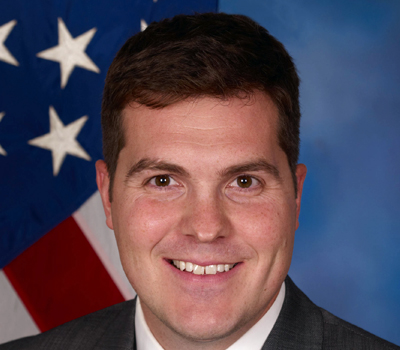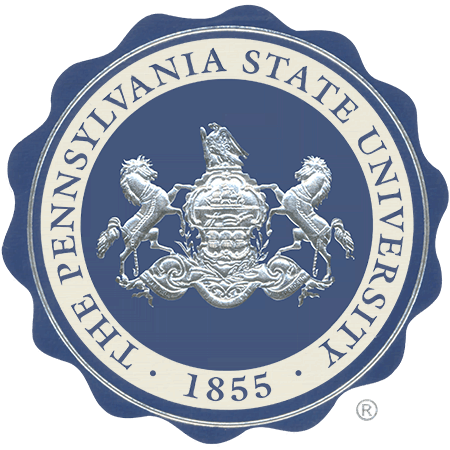How the computer has become scientists newest tool for preventative conditions resulting from extreme loading conditions
Extreme environments or loading include space, vehicular accidents, explosions, impacts in sports, falls, thermal fatigue and sometimes even medical procedures. Therefore, it is important to understand extreme environments and the ways in which the human body is affected by these environments. Computational biomechanics has been a necessary tool in better understanding extreme environments because it helps explore numerical methods and investigations of injury mechanisms that may result from extreme loading conditions. Imagine rather than waiting for an accident to happen, being able to conduct computer simulations that can accurately illustrate the ways our bodies are impacted because of extreme loading conditions. This is exactly what scientists at the Computational Biomechanics Group at Pennsylvania State have been working hard to do.
Dr. Reuben Kraft leads the Computational Biomechanics Group at Pennsylvania State University. His research focuses on understanding the mechanics and physics of biological systems using computational methods. In so doing, the power of high performance computing is used as a tool to understand the response of humans in extreme environments. One primary focus of his research portfolio is traumatic brain injury. Dr. Kraft created connectome neurotrauma mechanics which allows, for the first time, for a physics-based model to be linked to a network-based analysis that establishes a coupled computational method to study the effects of localized structural damage or lesions. In short, Dr. Kraft is able to virtually understand injuries which therefore allows scientists to study these injuries on the smallest scale possible leading to breakthroughs in preventative care, treatments, mitigate risks, and a richer understanding of the neuroanatomy behind extreme environments.
Currently, Dr. Kraft's research falls into four subareas:
- Traumatic brain injuries: according to the Centers for Disease Control and Prevention in the United States, approximately 1.7 million people, on average, sustain a traumatic brain injury annually. With recent advances in computational methods and high performance computing, Dr. Kraft saw the need and the exciting possibility to merge brain neurotrauma biomechanics and human connectomics science to form a new area of investigation - connectome neurotrauma mechanics. For neurotrauma, the idea is simple - inform human structural connectome analysis using physics-based predictions of biomechanical brain injury. If successful, this technique may be further used to inform human functional connectome analysis, thus providing a new tool to help understand the pathophysiology of mild traumatic brain injury. Dr. Kraft is a member of the Penn State Center for Sports Concussion and Service. The center collects data and performs neuroimaging and neurodiagnostics. Dr. Kraft hopes that through his research, scientists will have a better understanding of specific risks that affect individuals across age groups, sizes, sports, and positions. He is also a member of the Institute of the Neurosciences at Penn State and the Center for Neural Engineering.
-
Lower extremity and spinal injury biomechanics: In this research project the PSU CBG is collaborating with a number of government and industry partners to develop a computational framework to simulate and analyze high strain rate loading and bone fracture within the human lower extremities. Dr. Kraft's role is to explore the fundamental process of fracture and failure in bones, develop novel computational approaches for modeling the complexities of biological tissues, and provide multiscale descriptions of failure that can be embedded in more coarse models. Dr. Kraft is specifically focused on the developing a calcaneus finite element model, with unparalleled anatomic and constitutive detail. This fracture is modeled using dissipative mechanics that attempt to capture the bone fracture morphology explicitly.
-
Multiscale computational morphogenesis: The PSU CBG research extends multiple length and time scales from whole body dynamics to cellular processes. Craniosynostosis is a common and complex craniofacial condition (~4 per 10,000 live births) that imposes a substantial financial and emotional burden on patients and their families. Craniosynostosis is a condition defined by premature closure of cranial vault sutures, which is associated with abnormalities of the brain and skull. Many causal relationships between discovered mutations and premature suture closure have been proposed but an understanding of the precise mechanisms remains elusive. This research develops a computational framework of biological processes underlying cranial growth that will enable a hypothesis driven investigation of craniosynostosis phenotypes using reaction-diffusion model and the finite element method. Primary centers of ossification in cranial vault are identified using an activator-inhibitor model that represents the behavior of key molecules for bone formation. Biomechanical effects due to the interaction between growing bone and soft tissue is investigated to elucidate the mechanism of growth of cranial vault.
Dr. Kraft's research has a broad impact including an improved understanding of neurotrauma and disease so that better protection, diagnostics, and rehabilitation can be achieved. The study of new approaches and methods in computational biomechanics is a significant focus of the research that, if successful, may apply to other organs besides the brain. Specifically, modeling techniques for capturing damage in soft fibrous tissues are proposed which could be applied to a wide range of engineering problems. Dr. Kraft's research will greatly impact the lives of our military as it works to prevent health care concerns. In addition, his research with athletes and the civilian population will allow for life-saving measures. In short, Dr. Kraft's research may lead to tools that will help mitigate injury and advance the medical world towards better protecting individuals.
Bio
Dr. Kraft is an Assistant Professor of Mechanical Engineering at Penn State in the Department of Mechanical and Nuclear Engineering.
Prior to his appointment at Penn State, Dr. Kraft led the Computational Injury Biomechanics group within the Soldier Protection Sciences Branch at the U.S. Army Research Laboratory from 2008-2012 and then served as the Lead Researcher of Computational Biomechanics at The Johns Hopkins University Applied Physics Laboratory from 2012-2013. He has served on the Department of Defense Computational Brain Injury Modeling Expert Panel and the Defense Department's Integrated Research and Product Team for Traumatic Brain Injury Neurodiagnostics.
In 2011, President Obama recognized Dr. Kraft with the Presidential Early Career Award for Scientists and Engineers (PECASE) for his research contributions in computational biomechanics.Dr. Kraft has been pioneering a method to merge brain injury biomechanics and human connectomics science to form a new area of investigation - connectome neurotrauma mechanics (Kraft et. al., PLoS Comp. Bio., 2012). In this method, time-evolving structural brain networks are degraded using physics-based modeling of neurotrauma.
To learn more about Dr. Kraft's research see http://www.mne.psu.edu/compbio


